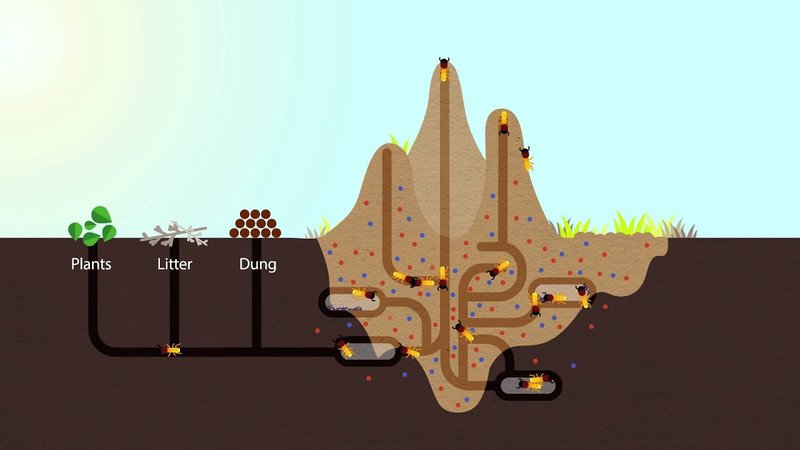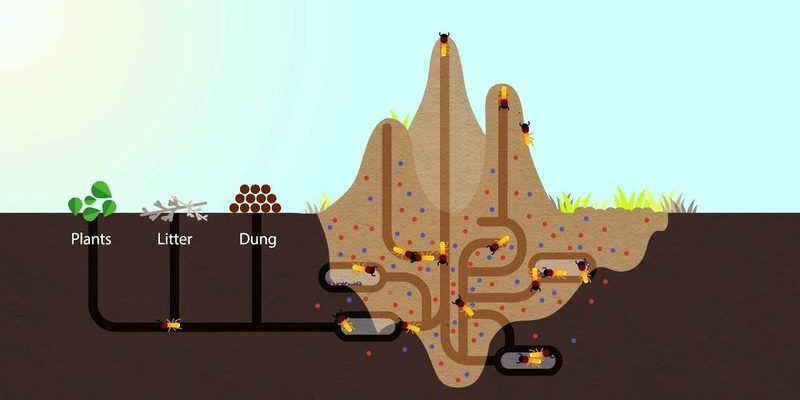
Termites might not get the love they deserve, but they’re essential for a healthy ecosystem. They help enhance soil quality and promote plant growth. Let’s dive deeper into how termites fit into the big picture of nature’s balance and why their role is far more significant than you might initially think.
Termites: The Unsung Heroes of Decomposition
Termites are master decomposers. They feast on wood, leaves, and other plant materials, breaking them down into simpler compounds. This process is essential for the health of forest ecosystems. When plant matter decays, *nutrients* are released back into the soil, making it richer and more fertile. It’s this kind of recycling that supports new plant life.
But here’s the thing: if termites weren’t around, we’d be stuck with heaps of dead trees and plant matter. This would lead to a buildup of organic waste, which may cause various environmental issues, such as hindered growth of new plants and an imbalance in ecosystem dynamics. Thanks to their munching habits, termites help maintain the nutrient cycle that keeps our planet thriving.
Soil Engineers: Improving Soil Structure
You might be surprised to learn that termites do more than just break down materials. They also play a key role in improving soil structure. As they dig their tunnels, they aerate the soil, allowing water and air to reach plant roots more effectively. Think of it like a natural irrigation system!
Moreover, their tunneling creates channels that help with *drainage*, reducing the risk of flooding during heavy rains. This is particularly important in agricultural settings where proper drainage can make or break a crop. The soil becomes more resilient, which is crucial for sustaining diverse plant life.
Supporting Biodiversity
The presence of termites in an ecosystem promotes *biodiversity*. How, you ask? Well, by breaking down organic materials, they create habitats for other organisms. Many insects and small animals find shelter in termite mounds or in the decaying wood that termites leave behind.
This rich environment attracts a variety of species, from fungi to birds. A healthy population of termites helps maintain this intricate web of life, ensuring that multiple species can flourish together. Without them, the balance of nature could tip, and many organisms could struggle to survive.
Termites and Plant Growth
It’s fascinating to realize that termites indirectly support plant growth. When they break down organic matter, they release *nutrients* like nitrogen and phosphorus back into the soil. Plants rely on these essential nutrients for healthy growth and development.
Moreover, some plants even form symbiotic relationships with certain termite species. For instance, some trees benefit from the nutrients produced by termite activity. It’s a beautiful example of how all creatures, big and small, are interconnected in the ecosystem.
The Impact of Termite Activity on Carbon Cycling
Did you know that termites also influence carbon cycling? By breaking down cellulose in wood, they contribute to the carbon cycle. The decomposition process releases carbon dioxide into the atmosphere, which is a crucial component of photosynthesis.
Through their activities, termites help regulate the amount of carbon stored in soil and vegetation. This process is vital in the fight against climate change, as healthy ecosystems can help manage carbon levels, making termites tiny warriors in the battle for our environment.
Human Perspective: Why Should We Care?
You might be wondering why all this matters to us humans. Well, healthy ecosystems contribute to clean air, water, and food supplies—things we all depend on. By supporting termite populations, we support healthier forests and agricultural lands.
Plus, understanding the role of termites can help in conservation efforts. When we recognize the importance of these insects, we can work towards promoting biodiversity and protecting their habitats. It’s all about keeping the balance in nature and ensuring our planet remains vibrant for generations to come.
So, next time you hear about termites, remember—they’re not just nuisances; they are vital players in our ecosystems. They help in decomposition, improve soil structure, support biodiversity, and even play a role in carbon cycling. These tiny insects may seem insignificant, but their impact is massive.
Let’s embrace the role of termites in our ecosystems and appreciate their hard work. By understanding their importance, we can strive to protect them and maintain the balance that sustains all life on Earth. After all, every little creature plays a part in this beautiful, interconnected world we call home.

